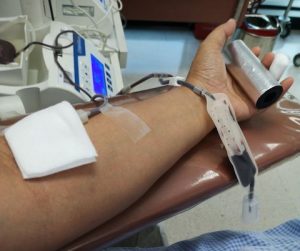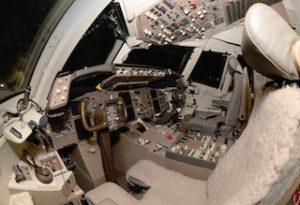Bone Marrow Donation and Air Travel
 Bone marrow donation involves a medical process that supports patients with severe conditions. After bone marrow donation, people need recovery time. This recovery phase often includes rest and mild physical activity. Flying after bone marrow donation requires awareness of physical changes. Each step needs caution to avoid stress or fatigue.
Bone marrow donation involves a medical process that supports patients with severe conditions. After bone marrow donation, people need recovery time. This recovery phase often includes rest and mild physical activity. Flying after bone marrow donation requires awareness of physical changes. Each step needs caution to avoid stress or fatigue.
Air pressure changes affect the body after bone marrow donation
Air travel places pressure on the body due to cabin altitude. After bone marrow donation, the body works harder to heal. During a flight, oxygen levels drop slightly. This may cause mild fatigue or dizziness. These effects can increase discomfort if recovery has not progressed enough. Therefore, timing matters greatly.
Fatigue may last for several days
Bone marrow donation may cause fatigue. This fatigue can linger for days or weeks. The body may need time to restore strength. Therefore, long walks or lifting luggage may feel difficult. Even though many recover quickly, each body heals differently. Light movements help but do not speed the process.
Doctors often advise some recovery days
Doctors usually recommend rest after donation. Although recovery can be fast, some symptoms may delay activity. Pain at the needle site can last. In some cases, back pain or weakness appears. While mild, these symptoms may make flying more tiring. Rest helps reduce pain and improves energy levels.
Hydration helps during and after donation
Proper hydration helps after bone marrow donation. Drinking water keeps energy levels stable. On a flight, dry cabin air can cause dehydration. This may worsen fatigue or lightheadedness. Staying hydrated helps maintain blood flow and oxygen levels. Water also supports healing and improves comfort in the air.
Flying soon after donation needs support
Travelers who fly after donation may need support. This could include assistance at the airport. Wheelchairs or early boarding can help reduce physical stress. Support from staff or friends makes the journey easier. Many airports provide help with walking long distances or managing stairs. Planning ahead avoids stress.
Pain management should be planned early
After bone marrow donation, mild pain may remain. Painkillers can help but must be approved. Doctors often suggest over-the-counter options. These should not interfere with healing. On flights, long sitting hours may increase back pain. Using a pillow or cushion can ease this strain on the spine.
Short flights are less demanding
Short flights place less strain on the body. After bone marrow donation, short trips help reduce tiredness. Less time in the air means fewer chances for discomfort. However, even short flights need preparation. Carrying water, snacks, and pain relief helps ease the process. Comfort matters more during recovery.
Long flights require more preparation
Long flights can exhaust the body faster. After donation, a long journey may need extra planning. Bring light blankets, soft cushions, and earplugs for comfort. Sitting for hours without moving may reduce circulation. Standing up to stretch every hour helps. Blood flow supports healing and reduces pain.
Food choices support recovery in transit
Eating balanced meals before and during a flight supports energy. After bone marrow donation, nutrition helps speed recovery. Protein and iron-rich snacks help restore blood cells. Avoid salty or sugary foods while flying. These can cause dehydration. Fresh fruits or light sandwiches support strength during travel hours.
Communication with airlines helps planning
Letting airlines know about recent donation helps with accommodation. Airlines can assist passengers who need help. Notifying staff ahead of time ensures easier boarding and access to help. Requesting seating with extra legroom can also reduce stress. Each flight becomes smoother with proper communication and early notice.
Listen to the body during the trip
Recovery requires self-awareness. Listen to signals from the body during flight. Dizziness, pain, or fatigue need attention. Do not ignore signs of strain. Take breaks, hydrate, and rest as much as possible. Adjust your seat for comfort. Bring noise-canceling headphones to reduce external stress and noise exposure.
Altitude does not delay healing alone
Altitude changes during flight do not usually slow recovery directly. However, side effects may worsen at high altitudes. Headaches, nausea, or lightheadedness may appear. People may feel tired sooner. Therefore, flying too soon may not support comfort. Waiting until symptoms ease helps the process remain smooth and calm.
Each donor has a different recovery speed
Recovery time differs from person to person. Some donors feel strong in a few days. Others need several weeks. Energy levels return slowly for some. Therefore, travel plans should match how the body feels. No exact day works for everyone. The decision to fly must match energy levels.
Warm clothing supports comfort on board
Cabins can feel cold during flights. Warm clothing helps keep muscles relaxed. After bone marrow donation, body temperature may change. Use soft sweaters, socks, and blankets to stay warm. Keeping warm supports blood flow and reduces stiffness. Comfortable clothes also reduce tension on sensitive areas.
Avoid heavy lifting during the journey
After donation, avoid lifting heavy items. Luggage and bags can strain the back and arms. Use wheeled bags for easier movement. Ask staff to lift items when needed. Physical stress may affect recovery speed. Light movements reduce muscle pain and protect against strain during the travel period.
Frequent stretching supports blood circulation
Moving during the flight improves blood circulation. Standing and walking help reduce discomfort. Stretching arms, legs, and neck improves comfort. After bone marrow donation, circulation remains vital. Muscles stay active and pain decreases. Small movements every hour support energy levels and make flying more pleasant.
Sleep is helpful after bone marrow donation
Rest is part of healing. During flights, try to sleep if possible. Noise, lights, or movement can interrupt sleep. Use sleeping masks, neck pillows, and earplugs for better rest. Sleep boosts recovery. Short naps or long rest periods support health during and after the journey.
Jet lag may increase fatigue temporarily
Traveling across time zones causes jet lag. After donation, this can increase tiredness. Light exposure and rest help adjust to new times. Avoid caffeine or alcohol during flights. These may disturb sleep. Staying hydrated and sleeping during the night schedule helps reduce jet lag symptoms quickly.
Travel insurance may offer extra help
Having travel insurance helps in case of delays or medical needs. After donation, extra care may be useful. Some policies include access to medical advice during trips. This can be helpful if discomfort grows mid-flight. Insurance helps reduce worry and supports peace of mind when flying post-donation.
Personal comfort
During recovery, comfort must take priority. Do not rush the travel process. Take time to rest, eat, and move slowly. Avoid packed schedules after landing. Spend time relaxing after flights. This helps the body adjust. A calm recovery improves energy and mood after the journey ends.
Listen to doctor’s travel advice
Medical professionals provide specific advice based on each case. Some donors can fly within days. Others must wait longer. Following doctor instructions prevents health issues. These instructions may change with progress. Check recovery progress often. Be honest about symptoms to help decide when flying is suitable again.
Mental health matters during travel
After donation, stress may build. Flying may trigger worry or tiredness. Relaxation techniques help reduce stress. Deep breathing, music, or quiet reading calm the mind. A peaceful state helps physical recovery. Focus on comfort rather than schedules. Take breaks from screens and noise during flights for rest.
Carry documents for medical safety
Keep donation records while traveling. These include donation dates and medical contacts. In case of discomfort, this helps health workers. Some airports or airlines may ask about recent medical procedures. Carrying documentation helps explain the situation clearly and avoids delays or confusion during the journey.
Post-flight recovery deserves care
After flying, allow time to rest again. Do not plan heavy tasks or long walks right away. Sleep and nutrition help energy return. If pain returns, take medication as directed. Stay in touch with health workers if symptoms remain. Giving the body time after flights supports complete healing.
Recovery journey still continues after landing
Healing continues even after travel. Flying may feel like a big step. Rest, hydration, and calm surroundings remain helpful. Allow the body to return to comfort at its own pace. Keep energy focused on recovery. Let each day build more strength without pressure. Small steps add up quickly.
Moving forward smoothly after travel
After flying, many people feel renewed confidence. Travel shows strength returning. The body and mind feel progress. Each rest, each breath, each quiet hour helps recovery. Comfort grows again. Calmness replaces worry. The journey after donation becomes clearer. With patience and care, everything continues to improve step by step.









